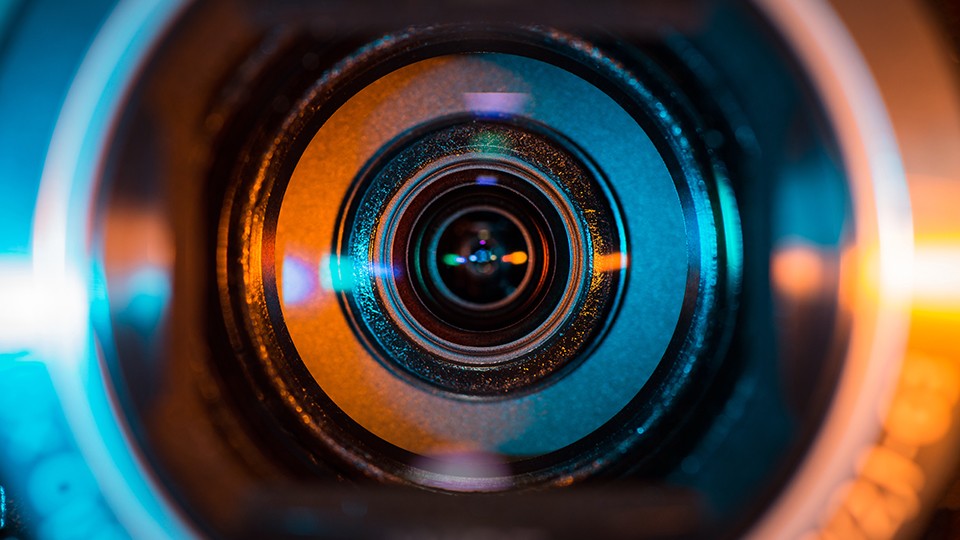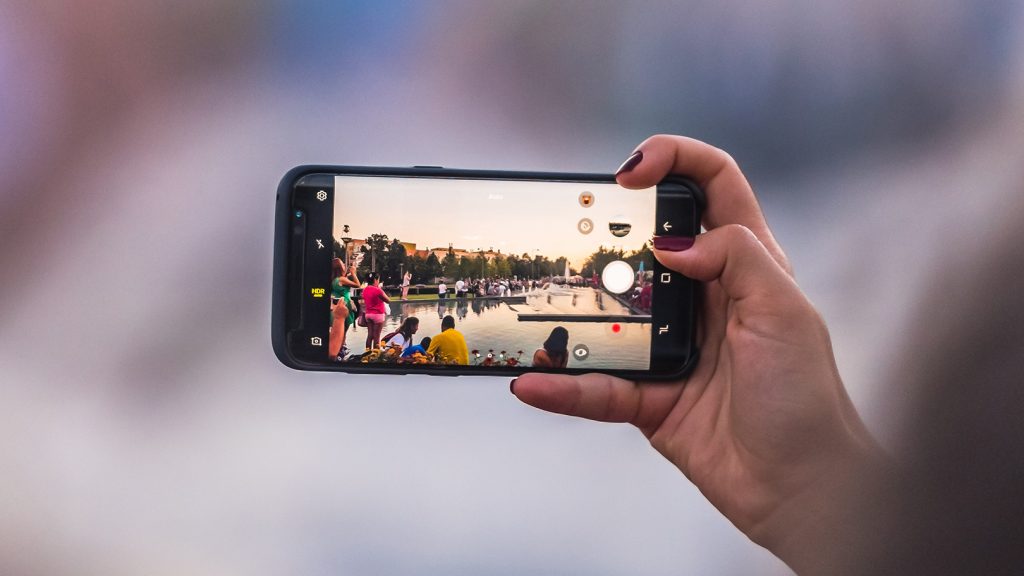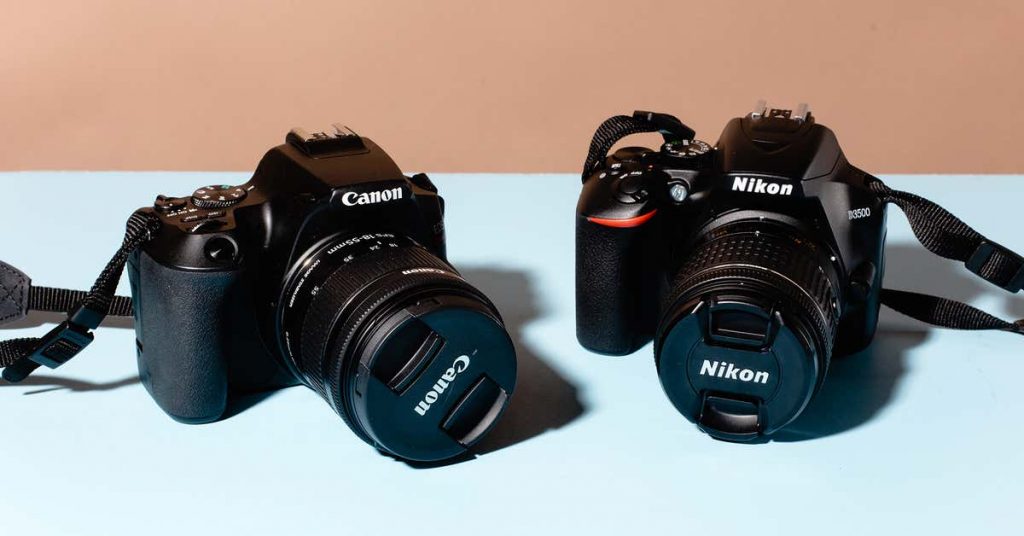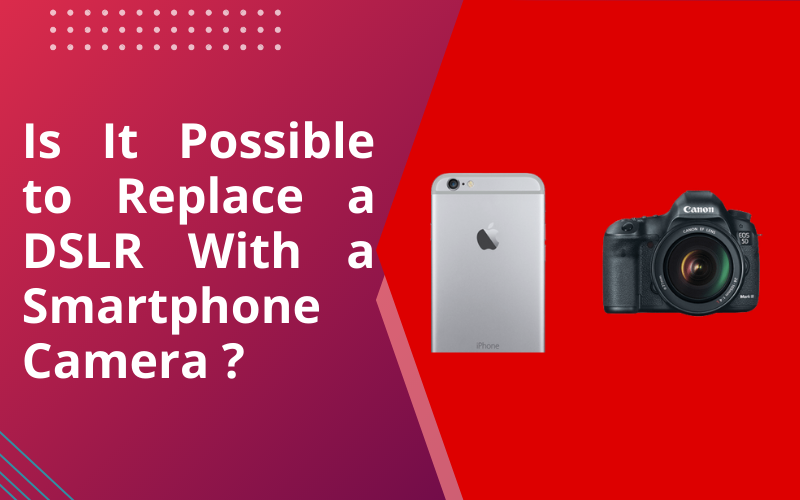Technology has evolved a lot through the last decade, and it surely impacted the camera market. With the launch of a new generation flagship, camera technology is advancing every year. For most casual users, a smartphone camera is a better option than a Digital Single Lens Reflex (DSLR) camera. Smartphone cameras come with software advance enough to make all kinds of adjustments that a really good photographer manually would make when shooting.

But is it really possible that smartphones going to replace professional cameras? Are we going to see professionals leave their DSLR behind and rely on their smartphone cameras?
Sensor size matters

There’s no arguing that smartphones are more user-friendly photo solution than DSLRs but there are some domains in which they can’t complete with DSLRs. The first is their small image sensor size. A camera sensor captures light and transforms it into electrical signals which emerge as an image. A large camera sensor size can capture more information which result in producing better quality images than smaller sensors. A camera sensor size determines depth of field, resolution, low-light performance and the physical size of camera.
Because of the compact size of smartphones, the sensor size is also very small than the DSLRs. DSLRs’ larger sensors also provide a upper hand to them as larger sensor results greater dynamic range, which is particularly useful in low lighting situation or high contrast scenes.
Lenses

Lenses are perhaps the most apparent distinction among a DSLR camera and a mobile camera. Smartphones are not capable of changing lenses and thats why smartphone manufactureres put multiple camera in their smartphone. You can also attach external lenses to your phone but they have no competition with DSLR lenses. The actual focal length of smartphone camera lenses is much, much shorter than DSLRs. Its always a better option to use DSLRs for wildlife or sports photography.
Optical zoom

DSLR zoom lenses are built with several glass components inside the lens cylinder that move back and forth to zoom in or zoom out. And again due to smaller size of smartphone, zoom lenes are almost impossible to embed within the device. Though some manufacturer started using periscope-like lens setups that can achieve almost 10X optical zoom but we can easily get almost 40X optical zoom with DSLRs. The optical zoom in smartphone doesn’t use the main camera so the image quality also get affected but in DSLR we use the same camera and the sensor cantake impressive low-light performance with the optical zomm lens efficiently.
Manual control

DSLR zoom lenses are built with several glass components inside the lens cylinder that move back and forth to zoom in or zoom out. And again due to smaller size of smartphone, zoom lenes are almost impossible to embed within the device. Though some manufacturer started using periscope-like lens setups that can achieve almost 10X optical zoom but we can easily get almost 40X optical zoom with DSLRs. The optical zoom in smartphone doesn’t use the main camera so the image quality also get affected but in DSLR we use the same camera and the sensor cantake impressive low-light performance with the optical zomm lens efficiently.
Reasons why mobile cameras are increasing in popularity

The major problem is whether or not smartphone cameras are good
enough to replace DSLR and mirrorless cameras, or will be good enough.
Second, let’s look at some of the reasons why this might be a possible scenario:
Smartphones are small. For photographers, size and weight are an important problem, especially if you tend to go on longer hikes and expeditions. There’s an explanation why, when they first arrived, many photographers turned to mirrorless cameras. The same group of individuals can also switch to smartphones.
Everyone has a smartphone. Smartphones are more accessible than ever and we’ve already seen it do a knockout on the point-and-shoot cameras with the improvement in image quality.
Edit and share instantly. When you take a picture from a camera, you need to transfer it to your desktop to edit or share but in smartphones you can easily install any editing tool and share it with anyone.
Why DSLR/Mirrorless cameras will still rule the professional market

Professional photographers are still going to prefer professional cameras . Weight and size will be an important factor, but the photographer community will still appreciate the extra versatility offered by a DSLR camera, the feeling of working with a professional instrument, and the extra quality of the image.
Image efficiency keeps improving. The performance of smartphone cameras is improving rapidly, but so is the output of DSLR and mirrorless cameras. So its hard to say that smartphone camera will take a leap anytime soon.
A DSLR camera always remains one level up. Many photographers will start their journey with a mobile camera, but they will invest in a DSLR or mirrorless camera once they get more into photography and want to get better. A smartphone remains a more professional tool than a camera.
There are many options to choose between. You can choose between several models when selecting a DSLR or mirrorless and find the one that best satisfies your requirements. A camera is a camera, nothing more but smartphone comes with many features and you need to find a smartphone with best overall features which is really difficult to decide.
Lenses make a difference. Any professional photographer knows the importance of high-quality lens. You’re much more flexible when using a DSLR camera and can use different lenses for different purposes, but that is not possible with smartphone cameras.
Conclusion:
Its sure that smartphone cameras are inferior to DSLRs but in my opinion, DSLRs are for professionals. If you want to take good pictures but don’t want to invest your money and time in photography, you can rely on smartphone cameras. The camera technology in smartphones advanced a lot in this decade. The software in smartphone camera is far better for automatic shots in which you don’t need to manually adjust everything in your camera. Image quality became a important selling point for smartphones and therefore the manufacturers began investing heavily in cameras. As a result smartphone camera surpassed the compact cameras long ago.
